 Open Access
Open Access
ARTICLE
Hybrid Optimization Algorithm for Resource Allocation in LTE-Based D2D Communication
Department of Computer Science and Engineering, Noorul Islam Centre for Higher Education, Kumaracoil, Tamilnadu, India
* Corresponding Author: Amel Austine. Email:
Computer Systems Science and Engineering 2023, 46(2), 2263-2276. https://doi.org/10.32604/csse.2023.032323
Received 13 May 2022; Accepted 16 December 2022; Issue published 09 February 2023
Abstract
In a cellular network, direct Device-to-Device (D2D) communication enhances Quality of Service (QoS) in terms of coverage, throughput and amount of power consumed. Since the D2D pairs involve cellular resources for communication, the chances of interference are high. D2D communications demand minimum interference along with maximum throughput and sum rate which can be achieved by employing optimal resources and efficient power allocation procedures. In this research, a hybrid optimization model called Genetic Algorithm-Adaptive Bat Optimization (GA-ABO) algorithm is proposed for efficient resource allocation in a cellular network with D2D communication. Simulation analysis demonstrates that the proposed model involves reduced interference with maximum sum rate and throughput. The performance of the proposed model is compared with the existing Ant Colony Optimization-based resource exchange and GAME (ACO-GAME) theory models, Trader-assisted Resource EXchange mechanism-Radio Access Network (TREX-RAN) and De-centralized Radio Access Network (TREX-DRAN), and greedy CYcle-Complete preferences (CYC) models. The proposed model offers a maximum sum rate of 83 kB/s, which is much better than the existing techniques.Keywords
Demand for data-oriented applications increases every day, which increases the data requirements. High-definition videos, virtual applications, etc., involve large volumes of data. To meet the data requirements, cellular service providers have introduced new technologies. However, owing to several applications and connections, the service providers face issues related to security, link and interference management, and resource allocation. The main advantage of 5G is its support for D2D communication that aids in managing traffic offloading [1,2]. Communication between devices does not involve a Base Station (BS). This D2D communication will be helpful even during a disaster. The network that supports D2D communication is categorized into in-band and out-band networks. The categorization is performed based on the dedicated frequency band. In case the communication is underlaid or overlaid, it is an in-band D2D. If communication involves an unlicensed frequency band, it is an out-band D2D network. Out-band involves zero interference and offers high capacity but lags in performance due to different types of interfaces. A simple illustration of the D2D and cellular links is depicted in Fig. 1.
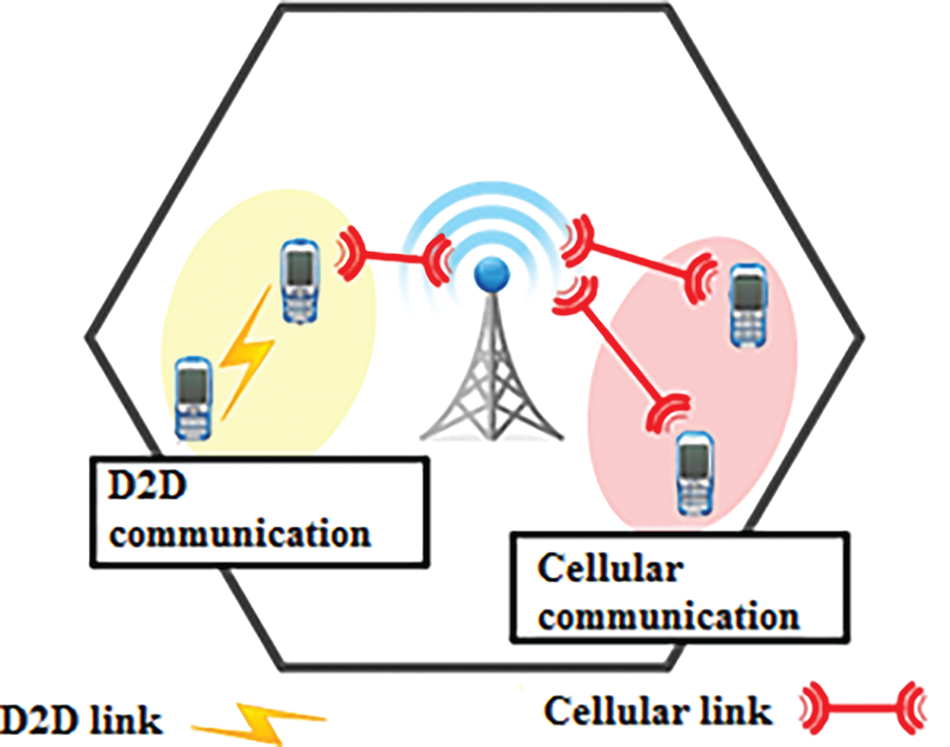
Figure 1: Illustration of D2D and cellular link
The significant aspects which impact the D2D performance are broadly analyzed for identifying the research objective. Network architecture, standardization procedures, methods of identifying and selecting neighbors, resource allocation with power control, network spectral efficiency, coverage probability, relaying and security are taken into consideration (Fig. 2).
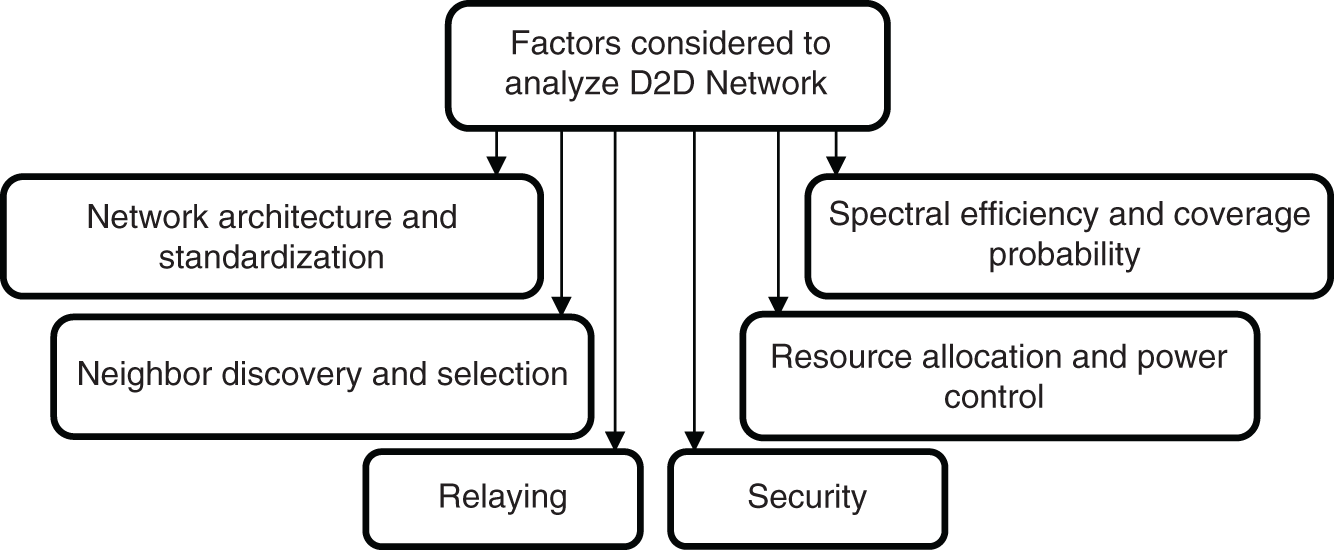
Figure 2: Major factors in D2D network
Different modes of communication of D2D are considered. To support mmWave D2D proximity services, the architecture is modified to manage operations like discovering, establishing and maintaining links. Based on Long-Term Evolution (LTE) internetworking, the mmWave D2D networks cover a wide range of transmissions. Another important aspect of this network is identifying neighbors and choosing the most appropriate one for communication. This crucial process initially discovers all the neighbors and selects one based on the best link. Network-centric and device-centric schemes are popular approaches followed in D2D for neighbor discovery. In the case of network-centric approaches, the network is responsible for identifying the neighbor devices. In the case of device-centric neighbor discovery, the devices are accountable. In a denser environment, network-centric schemes perform better than device-centric ones. To reduce communication overhead as well as power consumption, neighbors should be rapidly discovered.
Once neighboring devices are discovered, and the best one is chosen for communication, resources are allocated and power control is effectively done. Since users in a D2D network use the same resources as cellular users, there are high chances for interference. Interference causes energy degradation and affects system efficiency. Hence, appropriate interference management schemes are required. Interference in D2D may be based on network and frequency. When it is based on frequency, it is subdivided into uplink and downlink interferences. In the case of network-based interference, it is divided into homogeneous interference and heterogeneous interference. Cancellation, avoidance and coordination are the major interference management factors. Interference is evaded by preventing cellular users from transmitting data in the D2D user range. In case of interference co-ordination, D2D and cellular user requirements are analyzed, and optimal resources are allocated without any interference. To support interference cancellation, successive and full duplex-based methods can be implemented. Only in-band D2D networks demand interference management schemes.
Traffic reduction at the BS and improved spectral efficiency with increased coverage probability are the other features of D2D. Poisson cluster process, stochastic geometry and probability theory are widely utilized to analyze the spectral efficiency and coverage probability [3]. Coverage probability in a D2D network is improved using D2D relays, which deliver connections to out-of-range users and establish routes over blockages in the network. Relaying schemes like decode and forward, amplify and forward, and demodulate and forward are used in D2D transmissions. To choose optimal relays, fuzzy logic and optimization algorithms are employed [4]. Finally, security is the primary factor that enables other factors to be reliable and effective. As the overall process involves direct communication among users, data transmission is reliable if appropriate resource allocation methods are employed [5,6,7]. So, resource allocation is the primary factor to be considered before establishing D2D links. It is essential to ensure resource availability and utilization during communication. So in this research work, a hybrid optimization algorithm is presented for optimal resource allocation. The contributions are presented to emphasize the significant works carried out in this research.
• A hybrid optimization algorithm for resource allocation in LTE-based D2D communication using the Genetic Algorithm-Adaptive Bat Optimization (GA-ABO) algorithm is proposed.
• A simulation analysis of the proposed hybrid optimization model is presented with a detailed discussion.
• A detailed analysis of the proposed and traditional resource allocation models is presented, and a comparative analysis is carried out to validate the better performances.
The remaining sections are organized as follows. A literature survey is presented in Section 2 which discusses the features of existing research works in D2D. The proposed hybrid optimization model is presented in Section 3. Section 4 presents the simulation analysis and results, whereas Section 5 summarizes the research work.
An extensive survey of existing D2D approaches is performed based on methodology and features. The primary aim of D2D communication is to reutilize the resources in cellular communication. It helps in improving spectrum management and avoids delay while servicing users. Resource allocation procedure in D2D is the foremost challenge regarding throughput and interference. The D2D resource allocation model presented in [8] throws light on game-theoretic and other mathematical models designed for resource allocation. A similar game theory-based content-sharing model that improves overall performance is presented in [9]. The presented approach ensures the scheme’s robustness, enabling it to obtain better decisions, offering improved QoS. The Gale-Shapley resource allocation algorithm is presented and evaluated in terms of optimality, convergence, complexity and stability. The presented approach improves overall efficiency and minimizes losses compared to traditional approaches.
The dynamic resource block sharing model presented in [10] highlights the interference mitigation challenges in D2D communication. As resource allocation is crucial while connecting multiple BSs, a game theory-based dynamic resource blocking model that maximizes resource utilization and allocates optimal resource block to the user with improved throughput is essential. The radio resource allocation technique presented in [11] allocates resource blocks based on sector or region to each D2D user. The adaptive allocation procedure calculates the resource requirements of each application and allocates resources based on the priority factor. Reduced complexity and improved performance are the observed features of the presented model. Though the game theory is widely adopted in resource sharing in D2D communication, it is essential to maintain QoS by improving the sum rate. The resources are to be appropriately reused without any collisions or overlap. A cooperative game theory presented in [12] efficiently manages overlapping and improves the sum rate and system utility. The presented approach improves communication by stabilizing the links and reducing the resource overlap in contrast to traditional systems.
The channel allocation problem in D2D communication reported in [13] focuses on improving the network utility by splitting the allocation process into channel sharing and selection. The presented game theory-based approach incorporates a coalition scheme and interference graph to solve the issues. The presented approach reduces computation complexity and attains high throughput in contrast to the existing state-of-art techniques. The multi-agent hierarchical learning algorithm presented in [14] allocates resources based on Stackelberg’s game theory. By considering the social and physical factors, the non-overlapping contents are chosen, and diverse QoS requirements are satisfied. The method improves network throughput and increases the content hit rate in contrast to other methods.
The D2D model presented in [15] introduces a new sharing paradigm that allows the user equipment to share resources without cellular user equipment. The presented pure D2D model supports IoT applications and improves the quality of links in the network. Ensuring signal quality and efficient resource sharing are the predominant features of the presented approach. Resource-sharing in [16] incorporates Lagrangian Dual Optimization that improves the performance of IoT networks. Channel selection technique is included in the resource-sharing procedure that allows multiple users to share channels between D2D users. The dual optimization model defines the D2D user’s optimal power and balances the sum rate and transmission power. Thus, the presented approach improves resource utilization and overall QoS of communication.
The joint optimization model presented in [17] improves channel assignment and offers security to cellular users. By analyzing the downlink resource allocation issues along with single and multi-channel D2D communications, it is seen that the presented joint optimization model performs better than other optimization approaches. The D2D model presented in [18] offers better interference management by using graph theory and coloring procedure. The challenges in interference management are overcome by investigating power allocation and performing resource block assignment by using graph theory. Graph coloring is employed for resource sharing to reduce computational complexity and address joint optimization problems. The optimal power and resource allocation analysis reported in [19] discusses the interference issues seen in underlying D2D communication. Instead of a single resource block assignment, the sum rate is improved by assigning multiple resource blocks from different cellular users, which reduces the power factors.
Full-duplex D2D resource allocation scheme presented in [20] employs the Khun-Munkers algorithm and a poly block-based algorithm for dealing with power allocation and channel assignment. Link interference and channel assignment flexibilities are expressed as non-convex optimization problems. A poly block-based algorithm resolves power allocation problems, and channel assignment issues are resolved using the Khun–Munkers algorithm. Initially, the presented approach assigns channel, allocates power to enhance QoS, and reduces interference seen among D2D links.
Admission control and resource allocation procedures for D2D communication are presented in [21]. Optimal solution is obtained using a greedy algorithm [22]. The best set of D2D links is determined in the admission control procedure to enhance QoS, and the resource allocation procedure supports D2D and cellular communication to maintain long-term QoS. The presented algorithm decouples power and channel allocation and minimizes energy consumption in contrast to the existing techniques. A cooperative relaying procedure for supporting D2D communication is presented in [23]. It employs a branch and cut algorithm to perform optimized linear resource allocation. A distributed greedy algorithm is presented to handle large-scale networks and obtain optimal solutions in D2D resource management.
The spectrum efficiency and capacity of 5G mobile networks are improved using D2D links. However, mm-wave resource allocation and interference management are complex processes. To overcome this, a heuristic algorithm that considers dynamic propagation conditions and provides optimal solutions to improve spectrum efficiency is presented in [24]. The presented approach improves the overall performance and reduces the computation complexity through its optimal solution. A joint resource allocation procedure reported in [25] utilizes the orthogonality of D2D links and transmission model uniqueness to obtain a 3-dimensional power model channel for supporting D2D communication. The presented approach introduces a cooperative mode that supports efficient resource allocation, and a sub-optimal scheme that reduces the time complexity in contrast to the existing methodologies.
To enhance the sum rate, a weighted bipartite matching algorithm is proposed in [26]. It classifies resource sharing into three types: one-to-one, one-to-many and many-to-many. The presented approach allocates optimal resources to users based on their requirements which avoids interference and improves system capacity offering improved throughput in contrast to other algorithms.
From the literature review carried out, it is observed that interference management and resource sharing are the main goals to be addressed and are solved by using game theory. The optimization problems are solved using statistical and probability models, and nature-inspired optimization algorithms are not employed in any of the research. By considering this, a hybrid optimization algorithm is presented in this paper to improve the sum rate and throughput in D2D communication.
This section presents the proposed hybrid optimization for efficient resource allocation in a cellular network supporting D2D communication. A hybrid optimization model called Genetic Algorithm-Adaptive Bat Optimization (GA-ABO) algorithm is proposed to enhance the performance of D2D communication. In the proposed optimization algorithm, the system model is initially defined followed by detailed steps for resource allocation. Consider a single-cell dynamic system for analysis that has BS at the center. Users in the cell (
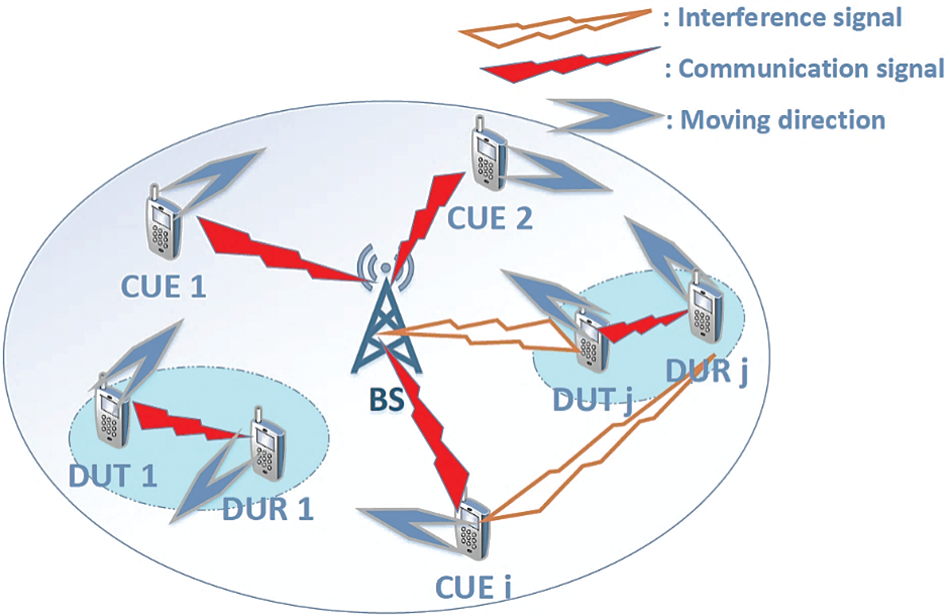
Figure 3: System model
As resources are reused, interference management in D2D communication is considered as a significant factor which introduces interference between cellular and D2D pairs. If a D2D pair utilizes the cellular user resource, then the Signal to Interference and Noise Ratio (SINR) for cellular and D2D pairs is expressed as shown in Eqs. (1) and (2), respectively.
where ‘j’ represents the D2D pair which utilizes the cellular user resource ‘i’, and ‘t’ represents the time slot. The transmission powers of cellular user are represented as ‘
The data rate for cellular users when there is no interference in the D2D links is obtained based on the maximum power.
where, the maximum transmit power is represented as ‘
Throughput maximization and sum rate enhancement are the objectives with minimum QoS target for cellular users.
GA and ABO algorithms are incorporated in the proposed work for efficient resource allocation. GA is an iterative optimization procedure that is derived based on biological metaphors to obtain a new solution in the search space. It encodes the solution, which is similar to a data structure. A set of random solutions are initialized. By using a fitness function, the performance of every individual is evaluated. In every iteration, better solutions are chosen for the next generation, and new solutions are obtained by combining the parents by crossover or modifying the solutions through mutation. These solutions replace weaker solutions so that progressive development toward a better solution is possible. The main advantage of GA is the elimination of weaker candidates and the improvement of optimal solutions. In the conventional GA, the length of the chromosomes is fixed based on the number of D2D transmitters. But in the case of proposed approach, every chromosome handles a dynamic subcarrier. The collection of chromosomes is termed as individuals, and the chromosomes denote subcarriers. An orthogonal resource allocation procedure is employed for cellular users, wherein the number of users and subcarriers are equal.
Evaluation of fitness function in GA is essential as it defines how close the obtained solution is to the optimal solution. The fitness value minimizes the data rate for the D2D transmitter. The fitness function is formulated as follows
where ‘
ABO algorithm is used in enhancing the genetic model’s optimal solution. The ABO model optimizes ‘
where, random numbers are n the range [0,1], and inertia weight is represented as ‘
where, normal and Poisson distributed random functions are represented as ‘
where, ‘
where, ‘

Hybrid optimization algorithm for D2D network resource allocation is evaluated through simulation analysis performed using Network simulator NS-3. Table 1 shows the simulation parameters used in the proposed model experimentation. For better validation, existing algorithms like ACO-GAME, T-REX-RAN, T-REX-DRAN and greedy CYC are considered for comparative analysis.

Fig. 4 depicts the network topology of the proposed model. The size of the network is taken as 1000 m × 1000 m, while the channel bandwidth is considered to be 10 MHz. The minimum bandwidth for 5G standard is taken as 5 Mhz, whereas the optimum is 40 MHz. Owing to simulation constraints, the bandwidth is chosen as 10 MHz. The termination criteria for proposed and existing models are selected for 500 iterations, and algorithms are allowed to execute for 40 independent runs. The interference level is measured, and an average value is considered for comparative analysis based on D2D pairs.
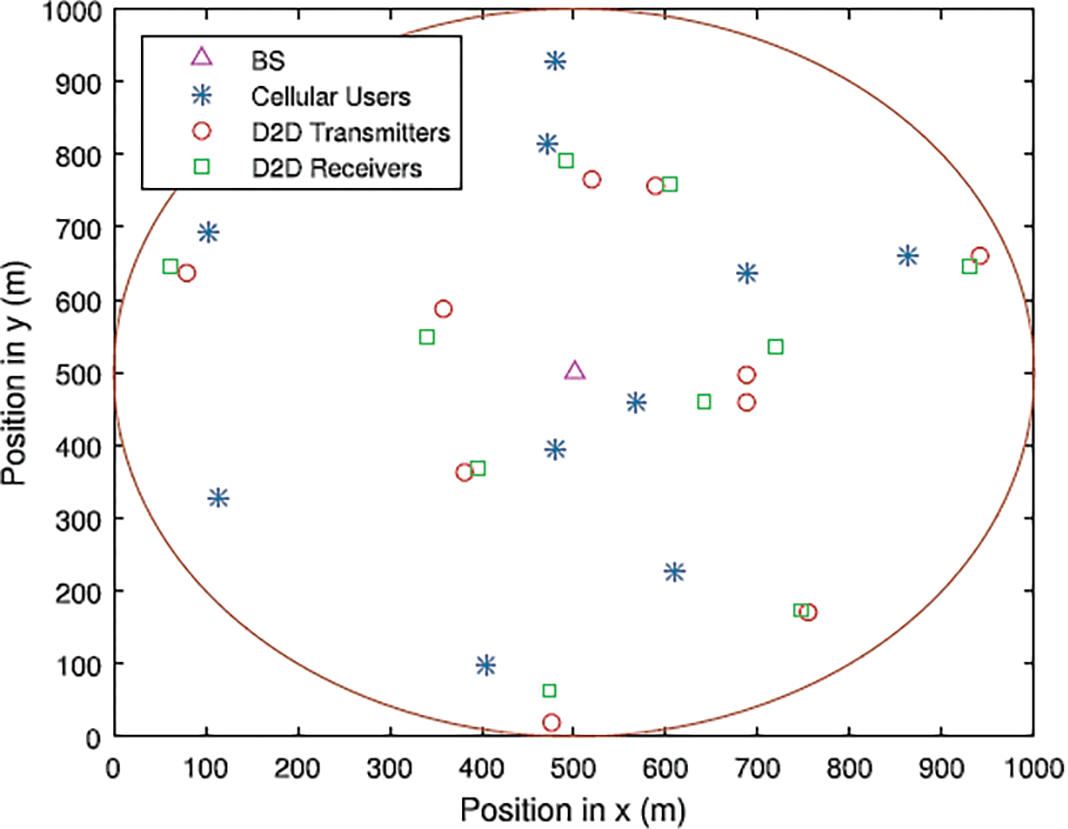
Figure 4: Network topology with cellular users and D2D pairs
Fig. 5 shows the average interference vs. D2D pairs in the cell. It is observed that the proposed hybrid optimization algorithm offers better performance in contrast to other models. The algorithm offers optimal solution, and enhances network performance by minimizing the average interference level in contrast to other methods.
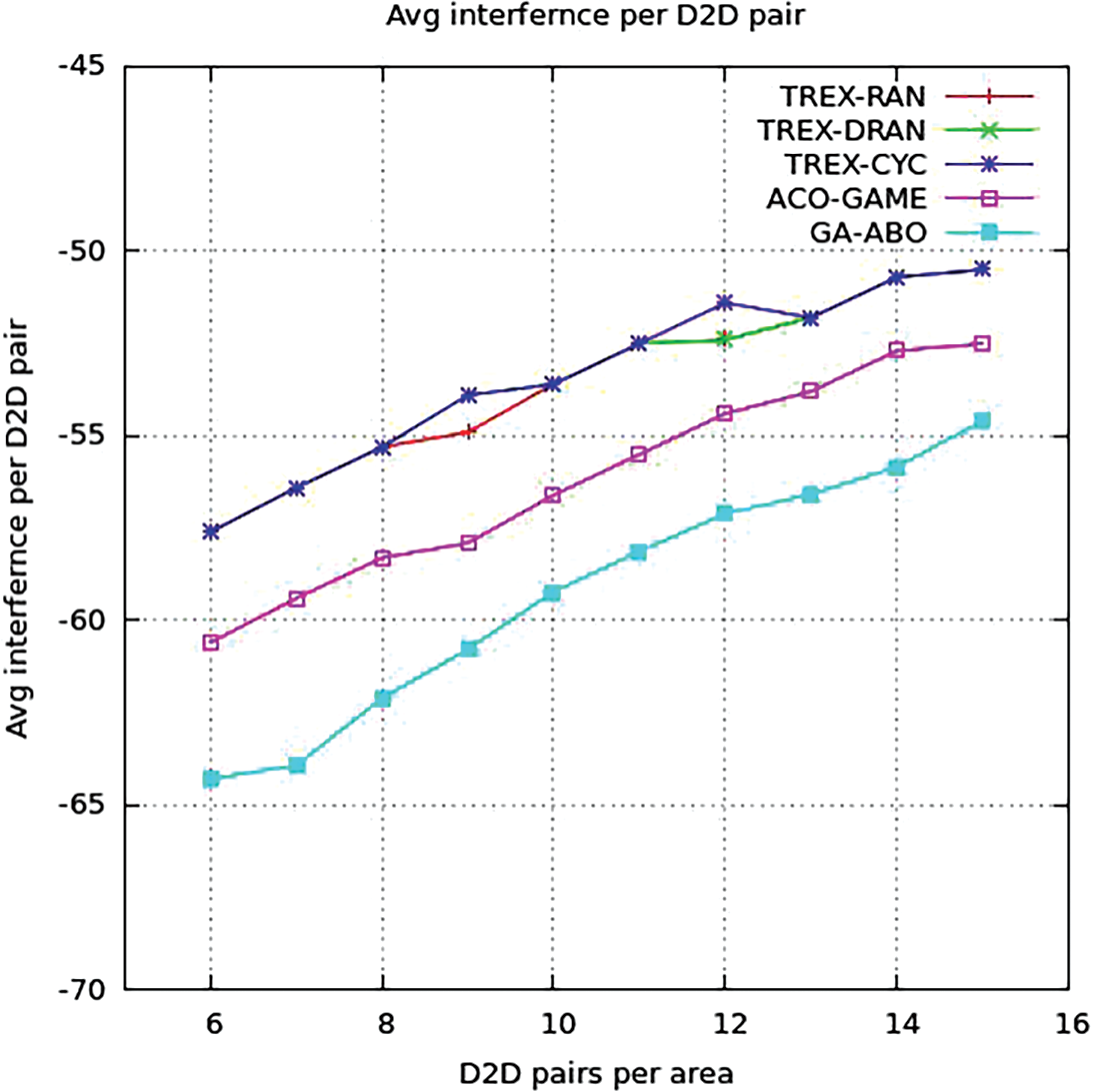
Figure 5: Analysis of average interference
Similarly, the average interference is analyzed based on the total number of resource blocks. The total Resource Block Groups (RBGs) are dynamically varied, and the interference of D2D pairs is measured (Fig. 6). From the results, it is observed that the proposed hybrid optimization model exhibits minimum interference as resource blocks are gradually increased. Initially, interference is increased owing to reuse of limited resource blocks. But, when number of resource blocks increases, the interference reduces. The proposed resource allocation procedure ensures that interference is maintained at a proper level without interfering with cellular user services. TREX-RAN, TREX-DRAN and TREX-CYC do not offer better performance due to improper resource allocation procedures.
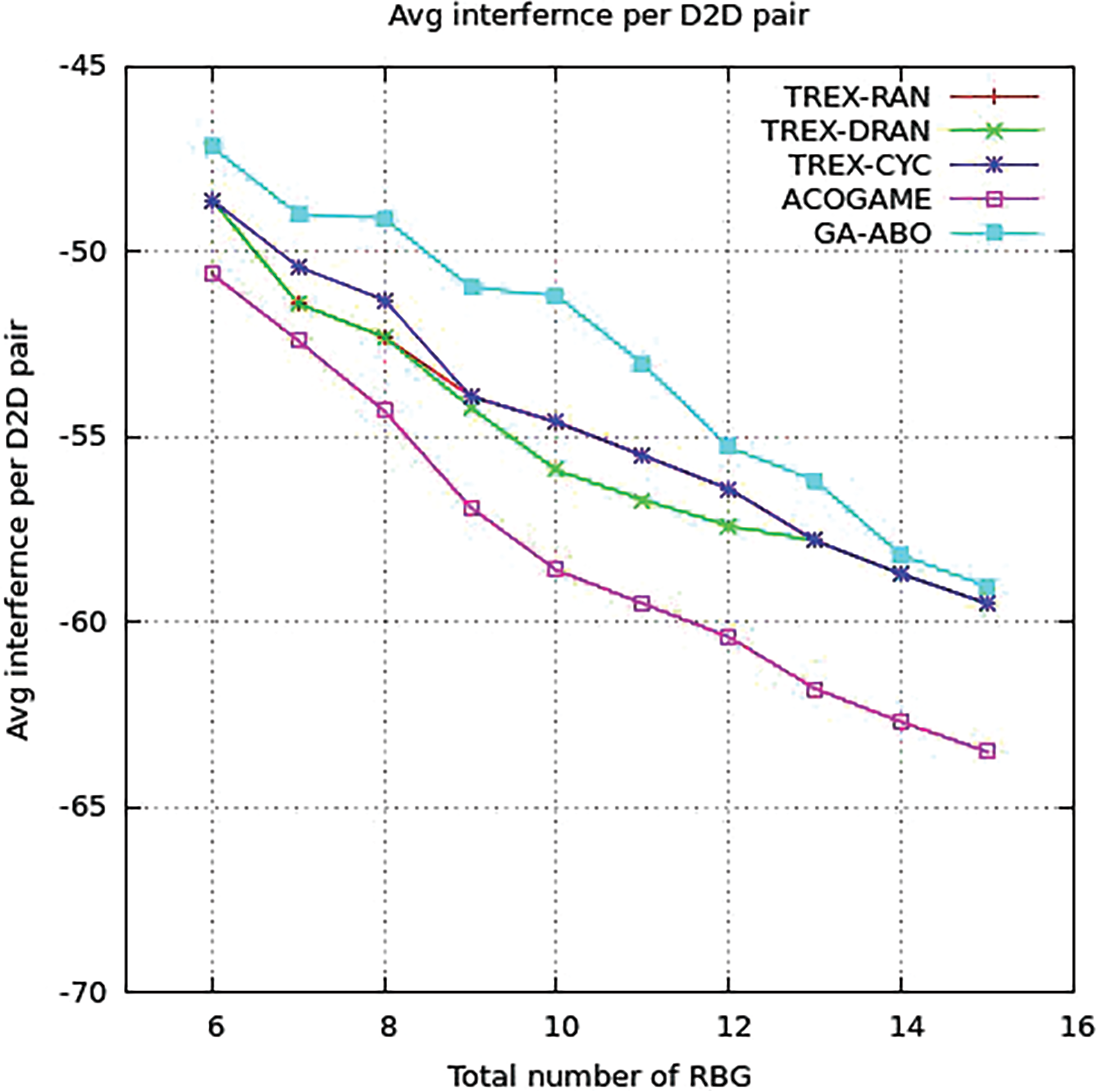
Figure 6: Average interference per resource block groups
In addition to average interference, the sum rate of the proposed model and existing models are compared and analyzed based on the total number of users and D2D pairs. Fig. 7 depicts the comparative analysis of the sum rate against the total number of users. The sum rates of TREX models do not converge in a better way. So for experimental analysis, ACO-GAME based resource exchange and conventional ACO-GAME models are considered for analysis. It is observed that the proposed hybrid optimization model exhibits a maximum sum rate throughout the process. Gradually, the user count is increased, and the performance is measured. It is evident from Fig. 7 that the maximum sum rate attained by the proposed model is 83 kB/s which is 5% greater than the ACO-GAME model and 14% greater than the conventional ACO model.
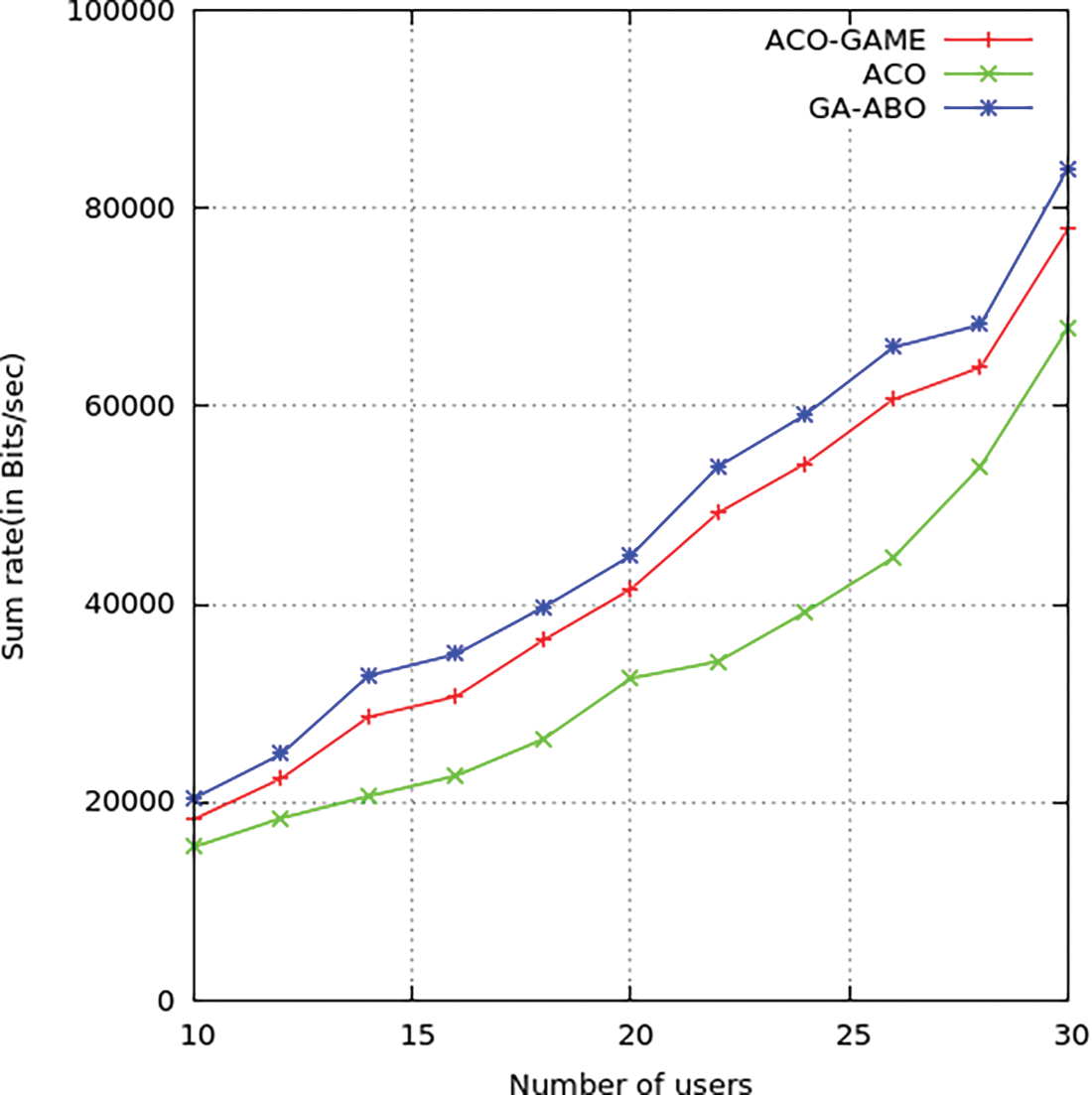
Figure 7: Sum rate per total number of users
Similarly, the sum rate for the proposed model and existing models are compared and analyzed for D2D pairs. Fig. 8 depicts the comparative analysis of the sum rate concerning D2D pairs. The pairs are gradually increased, and the performance is measured. It is observed that the proposed model exhibits a maximum sum rate in contrast to ACO-based models. The improved performance is due to the optimal selection of resources and power, which improves the resource exchange and overall QoS of D2D communication.

Figure 8: Sum rate per D2D pairs
From the simulation analysis, it is evident that the hybrid optimization algorithm offers improved resource allocation. The results demonstrate better performance of the proposed model in terms of maximum sum rate and minimum interference. The model can be used in real-time LTE applications.
A hybrid optimization model D2D communication is presented in this research work using the Genetic Algorithm-Adaptive Bat Optimization (GA-ABO) algorithm. Resource exchange mechanism plays a dominant role in ensuring the consistency of D2D pairs in D2D communication, as cellular user’s resources are used for direct communication. The existing approaches presented for D2D communication focus on resource allocation through a simple statistical process. However, the performance is improved by incorporating optimization algorithms into the resource allocation process. Based on this, the proposed hybrid optimization algorithm improves the sum rate and throughput, and minimizes the interference level. The results obtained through simulation analysis of the proposed model are compared with existing models based on average interference, throughput and sum rate. For a maximum sum rate of 94 kB/s, the proposed model exhibits better performance than the existing approaches. Further, it is planned to extend this research by incorporating deep learning techniques for better performance.
Funding Statement: The authors received no specific funding for this study.
Conflicts of Interest: The authors declare that they have no conflicts of interest to report regarding the present study.
References
1. W. Sun, G. Z. Dai, X. R. Zhang, X. Z. He, X. Chen et al., “TBE-Net: A three-branch embedding network with part-aware ability and feature complementary learning for vehicle re-identification,” IEEE Transactions on Intelligent Transportation Systems, vol. 23, no. 9, pp. 14557–14569, 2022. [Google Scholar]
2. W. Sun, L. Dai, X. R. Zhang, P. S. Chang, X. Z. He et al., “RSOD: Real-time small object detection algorithm in UAV-based traffic monitoring,” Applied Intelligence, vol. 52, no. 8, pp. 8448–8463, 2022. [Google Scholar]
3. X. Cai, X. Mo, J. Chen and J. Xu, “D2D-enabled data sharing for distributed machine learning at wireless network edge,” IEEE Wireless Communications Letters, vol. 9, no. 9, pp. 1457–1461, 2020. [Google Scholar]
4. S. Kim, “D2D enabled cellular network spectrum allocation scheme based on the cooperative bargaining solution,” IEEE Access, vol. 8, pp. 53710–53719, 2020. [Google Scholar]
5. H. Sun and R. Grishman, “Lexicalized dependency paths based supervised learning for relation extraction,” Computer Systems Science and Engineering, vol. 43, no. 3, pp. 861–870, 2022. [Google Scholar]
6. A. Sultana, L. Zhao and X. Fernando, “Efficient resource allocation in device-to-device communication using cognitive radio technology,” IEEE Transactions on Vehicular Technology, vol. 66, no. 11, pp. 10024–10034, 2017. [Google Scholar]
7. H. Xu, W. Xu, Z. Yang, Y. Pan, J. Shi et al., “Energy-efficient resource allocation in D2D underlaid cellular uplinks,” IEEE Communications Letters, vol. 21, no. 3, pp. 560–563, 2017. [Google Scholar]
8. R. Rathi and N. Gupta, “Game-theoretic and non-game theoretic resource allocation approaches for D2D communication,” Ain Shams Engineering Journal, vol. 12, no. 2, pp. 2385–2393, 2021. [Google Scholar]
9. X. Shi, D. Wu, C. Yue, C. Wan, X. Guan et al., “Resource allocation for covert communication in D2D content sharing: A matching game approach,” IEEE Access, vol. 7, pp. 72835–72849, 2019. [Google Scholar]
10. P. Kumar Barik, A. Shukla, R. Datta and C. Singhal, “A resource sharing scheme for intercell D2D communication in cellular networks: A repeated game theoretic approach,” IEEE Transactions on Vehicular Technology, vol. 69, no. 7, pp. 7806–7820, 2020. [Google Scholar]
11. P. Gandotra, R. Kumar Jha and S. Jain, “Sector-based radio resource allocation (SBRRA) algorithm for better quality of service and experience in device-to-device (D2D) communication,” IEEE Transactions on Vehicular Technology, vol. 67, no. 7, pp. 5750–5765, 2018. [Google Scholar]
12. J. Hu, W. Heng, Y. Zhu, G. Wang, X. Li et al., “Overlapping coalition formation games for joint interference management and resource allocation in D2D communications,” IEEE Access, vol. 6, pp. 6341–6349, 2018. [Google Scholar]
13. Y. Liu, Y. Wang, R. Sun and Z. Miao, “Distributed resource allocation for D2D-assisted small cell networks with heterogeneous spectrum,” IEEE Access, vol. 7, pp. 83900–83914, 2019. [Google Scholar]
14. J. Wang, Y. Sun, B. Wang, B. Wang, A. Wang et al., “Resource allocation for D2D video multicast using multi-leader multi-follower stackelberg game with personalized incentives,” IEEE Access, vol. 7, pp. 117019–117028, 2019. [Google Scholar]
15. W. -K. Lai, Y. -C. Wang, H. -C. Lin and J. -W. Li, “Efficient resource allocation and power control for LTE-A D2D communication with pure D2D model,” IEEE Transactions on Vehicular Technology, vol. 69, no. 3, pp. 3202–3216, 2020. [Google Scholar]
16. P. Khuntia and R. Hazra, “An efficient channel and power allocation scheme for D2D enabled cellular communication system: An IoT application,” IEEE Sensors Journal, vol. 21, no. 22, pp. 25340–25351, 2021. [Google Scholar]
17. J. Wang, Y. Huang, S. Jin, R. Schober, X. You et al., “Resource management for device-to-device communication: A physical layer security perspective,” IEEE Journal on Selected Areas in Communications, vol. 36, no. 4, pp. 946–960, 2018. [Google Scholar]
18. T. Yang, R. Zhang, X. Cheng and L. Yang, “Graph coloring based resource sharing (GCRS) scheme for D2D communications underlaying full-duplex cellular networks,” IEEE Transactions on Vehicular Technology, vol. 66, no. 8, pp. 7506–7517, 2017. [Google Scholar]
19. R. AliHemmati, B. Liang, M. Dong, G. Boudreau, S. H. Seyedmehdi et al., “Power allocation for underlay device-to-device communication over multiple channels,” IEEE Transactions on Signal and Information Processing over Networks, vol. 4, no. 3, pp. 467–480, 2018. [Google Scholar]
20. H. Chour, E. A. Jorswieck, F. Bader, Y. Nasser, O. Bazzi et al., “Global optimal resource allocation for efficient FD-D2D enabled cellular network,” IEEE Access, vol. 7, pp. 59690–59707, 2019. [Google Scholar]
21. S. Cicalò and V. Tralli, “QoS-aware admission control and resource allocation for D2D communications underlaying cellular networks,” IEEE Transactions on Wireless Communications, vol. 17, no. 8, pp. 5256–5269, 2018. [Google Scholar]
22. H. Meshgi, D. Zhao and R. Zheng, “Optimal resource allocation in multicast device-to-device communications underlaying LTE networks,” IEEE Transactions on Vehicular Technology, vol. 66, no. 9, pp. 8357–8371, 2017. [Google Scholar]
23. X. Xiao, M. Ahmed, X. Chen, Y. Zhao, Y. Li et al., “Accelerating content delivery via efficient resource allocation for network coding aided D2D communications,” IEEE Access, vol. 7, pp. 115783–115796, 2019. [Google Scholar]
24. Y. Chen, B. Ai, Y. Niu, R. He, Z. Zhong et al., “Resource allocation for device-to-device communications in multi-cell multi-band heterogeneous cellular networks,” IEEE Transactions on Vehicular Technology, vol. 68, no. 5, pp. 4760–4773, 2019. [Google Scholar]
25. R. Zhang, C. Qi, Y. Li, Y. Ruan, C. -X. Wang et al., “Towards energy-efficient underlaid device-to-device communications: A joint resource management approach,” IEEE Access, vol. 7, pp. 31385–31396, 2019. [Google Scholar]
26. F. Hussain, M. Y. Hassan, M. S. Hossen and S. Choudhury, “System capacity maximization with efficient resource allocation algorithms in D2D communication,” IEEE Access, vol. 6, pp. 32409–32424, 2018. [Google Scholar]
Cite This Article
 Copyright © 2023 The Author(s). Published by Tech Science Press.
Copyright © 2023 The Author(s). Published by Tech Science Press.This work is licensed under a Creative Commons Attribution 4.0 International License , which permits unrestricted use, distribution, and reproduction in any medium, provided the original work is properly cited.


 Submit a Paper
Submit a Paper Propose a Special lssue
Propose a Special lssue View Full Text
View Full Text Download PDF
Download PDF Downloads
Downloads
 Citation Tools
Citation Tools